BREAST FAT GRAFTING
The breast fat grafting treatment is considered to be an innovative method inorder to increase or correct the breast size and shape. In plain words, after the performance of liposuction treatment, the extracted fat from different parts of the body is transferred into the breast instead of throwing it.
First things first, we should make clear that Fat Grafting refers to Autologous FatGrafting, i.e. FROM A DONOR AREA TO A RECEIVING AREA OF THE SAME PERSON.
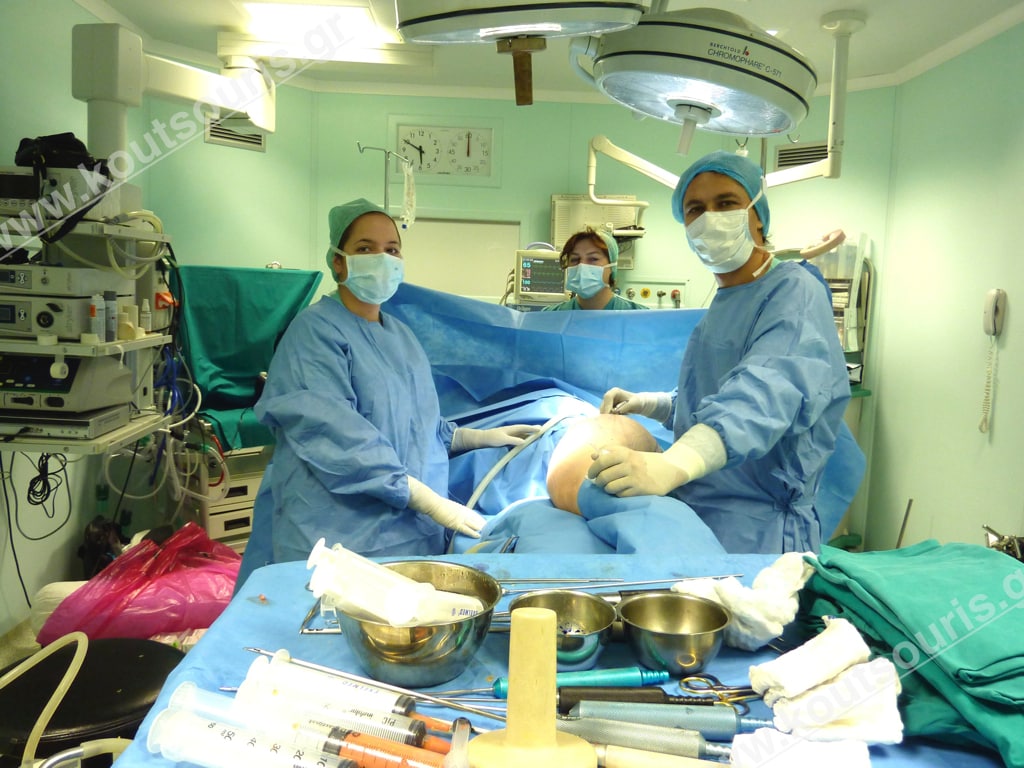
During this surgical technique we can correct at the same time two body parts:
1st. to remove the anti-aesthetical saddlebags or the excess fat from abdomen, thighs, knees or other body parts with localized lipodystrophy and then
2nd. to increase/correct the breast size or any asymmetries.
In which cases is breast Fat Grafting appropriate?
The breast Fat Grafting aims to the:
- breast size augmentation in cases of macromastia or anisomastia, as well as
- Correction of the breast shape or the reconstruction of the breast shape and size after surgery due to oncologic diseases, inflammations or injury.
Which women can undergo breast Fat Grafting?
It is very important to clarify that the breast augmentation with Fat Grafting from our own organism is a treatment that requires the careful selection of patients as well as the good cooperation between the plastic surgeon and the patient
The patient that undergoes breast Fat Grafting should have a sufficient fat amount in her body, in order to extract the required fat amount for the performance of the treatment.
Given that 50 – 70% of the transplanted fat is absorbed within 3 months after the surgery, we should transfer the double or triple fat amount than needed in each session in order to achieve the desired augmentation. It is clear that underweight or very thin women are excluded from this kind of treatment.
On the other side, regarding the potential candidates for breast augmentation with Fat Grafting, we should note in the case of a woman with breast malignancy history in her family or one that underwent a relevant surgery, a thorough preoperative control should be done. The candidate may be excluded in case of negative findings.
What kind of examinations should I do before the breast Fat Grafting treatment?
Given the fact that the mammary gland is a very dynamic tissue, breast fat Fat Grafting treatment should be preceded by a thorough preoperative control. The preoperative control consists of the following steps:
- Examination of a fully detailed medical history,
- Clinical check and palpation, both to the breast and related armpit,
- Breast Ultrasound,
- Digital Mammography. If there is any diagnostic issue then the patient should also do a
- Magnetic Resonance Imaging of breast (MRI).
The primary goal of this thorough preoperative control is to examine the breast, where the breast Fat Grafting treatment will be performed.
If we have a complete picture of the breast morphology before surgery, then we will be able to check any changes or to therapeutically intervene after the Fat Grafting treatment.
What kind of anesthesia is administered during the breast Fat Grafting treatment?
The breast Fat Grafting treatment is usually a long procedure with many technical particularities. The patient should stay calm and the surgeon should be very careful and methodical. On the one side, we should extract a large amount of fat from the donor area and on the other side; we should transplant this fat in many areas of the breast.
This is the reason why general anesthesia is chosen.
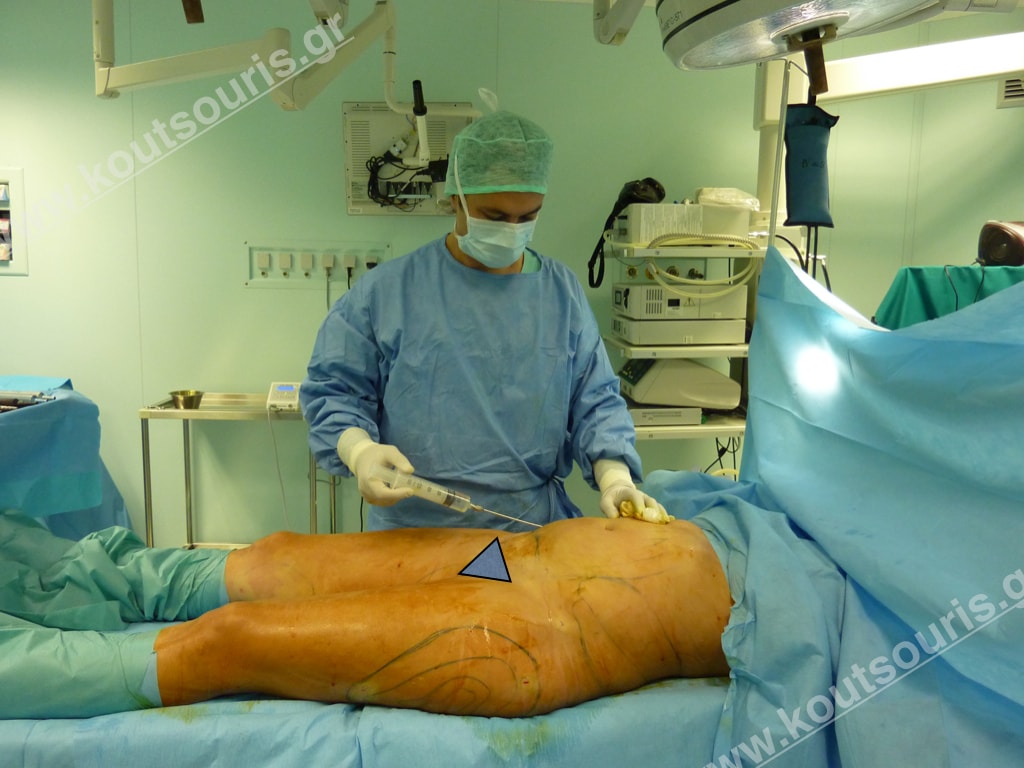
However, in cases of breast transfer treatments, which require a small amount of fat, e.g. after oncologic surgery, then the treatment can be performed only under local anesthesia or combined with neuroleptanalgesia (intoxication).
What is the procedure followed during breast Fat Grafting?
When we perform breast Fat Grafting, it is required to transfer about 250 – 450cc of fat in each breast.
As already mentioned above, after the Fat Grafting treatment about 50 – 70 % of the transplanted fat is absorbed and dissolved by the organism. Thus, the sufficient fat amount is about 150 – 300 cc per breast.
Depending on the desired breast size that we want to achieve, we can repeat the breast (autologous) Fat Grafting treatment more than once.
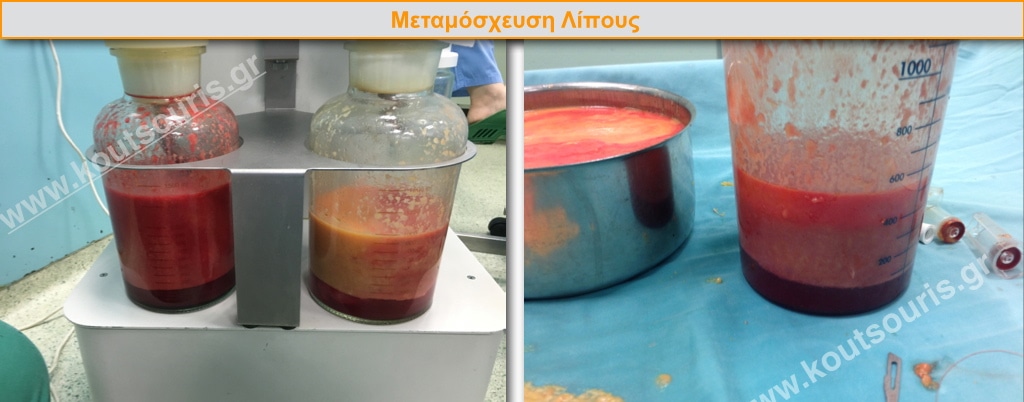
Usually, one to three or four consecutive fat grafting sessions are required within three months in order to achieve the breast size augmentation and correction with Fat Grafting.
What is the technical procedure of breast Fat Grafting treatment?
When we perform breast Fat Grafting, we put the fat deeply, close to the major thoracic muscle, as well as subcutaneously (about 1 to 1,5 cm under the skin).
In general terms, we avoid putting fat directly into the mammary gland mass, in order to prevent any possible injuries and maintain – as much as possible – the clinical and mammographic image of the gland through the breast autologous Fat Grafting.
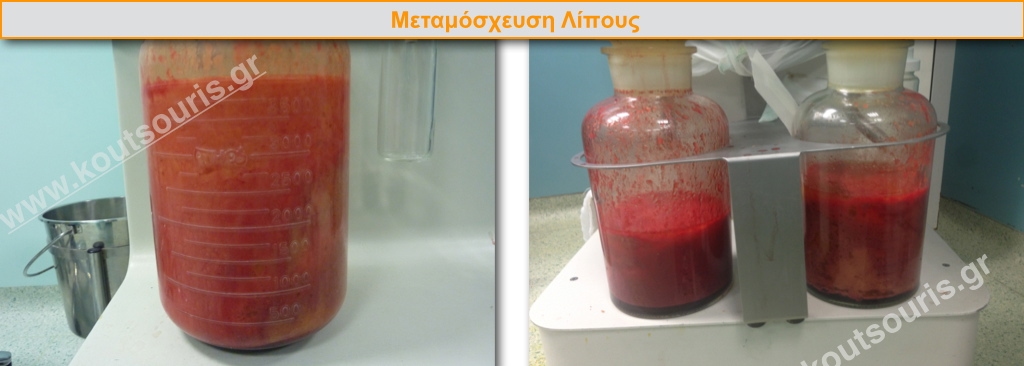
Does the breast Fat Grafting treatment hurt? How am I going to look like after the surgery?
When it comes to the Fat Grafting treatment, we could say that it is an almost painless procedure, given the fact that it is performed under general anesthesia. After the completion of the treatment, we inject a topical anesthetic with a long lifespan in the breast area, in order to avoid the postoperative pain.
When it comes to the postoperative period, most patients describe a feeling of pressure or mild annoyance, since the area forms an immediate postoperative edema, which can be more intense in some cases. In order to control sensitivity or pain after surgery, anti-inflammatories and analgesics are administered to the patient.
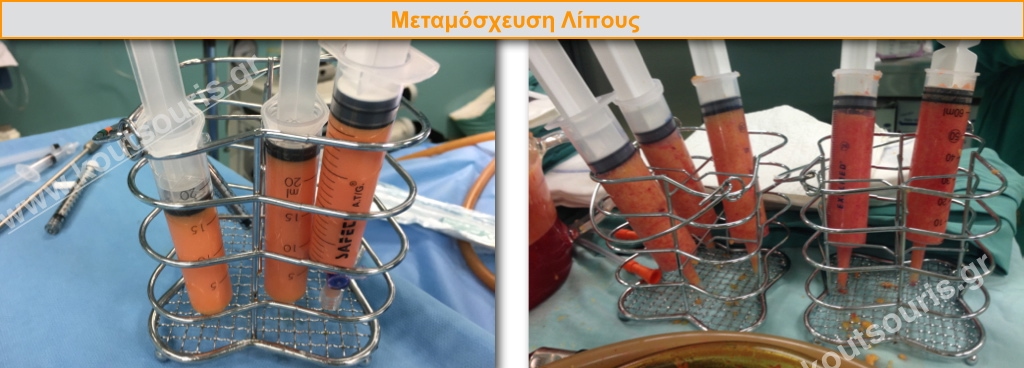
Swelling and bruises are more intense in the first 10 -15 days, while at the end of the first two weeks the cyan color gradually disappears and is replaced by a light-yellow color (due to the absorption of micro hematomas) disappearing in the following days.
What should I do after surgery?
The patient usually stays at the clinic fortnight, in order to check and monitor her condition. Also, the patient should wear a tummy belt in the donor area and an elastic bra without metallic underwire.
What should I avoid post surgically?
Immediately after surgery and for the next 12-14 days the patient should avoid bending and any strenuous activity (including activities that increase blood pressure, such as weight lifting or sports).
Most patients (depending on the extent of the treatment) can go back to work after 7 -10 days after the treatment.
Regarding the sutures removal from the small incisions in the donor and receiving area, there is no need to remove them because they fall on their own usually after 12 -15 days.
Are there any side effects after the breast Fat Grafting treatment?
The restoration of anisomastia or breast size and atrophy using the autologous Fat Grafting technique is a demanding surgical treatment with special technical details and difficulties. However, it requires experience, good knowledge of the anatomy and the particularities of the facial features of each person, in order to achieve a perfect aesthetic and functional result.
The most frequent consequence after breast transfer treatment is contusions (bruises) and edema (swelling), which both gradually disappear within 2-3 weeks.
Hematoma, inflammation or any infection of the DONOR or RECEIVING area are also rare complications, which are treated with drainage and antibiotic care respectively.
There is an often numbness feeling in the whole anterior chest wall area, which gradually disappears and is fully restored in about 1 -2 months.
Usually Several months after the breast Fat Grafting treatment some fatty cysts may appear inside the mammary gland mass, due to fat melting, which look like a malignant transformation.In such a case, a surgical solution is required, as well as a thorough diagnosis, which is usually performed with diagnostic paracentesis.
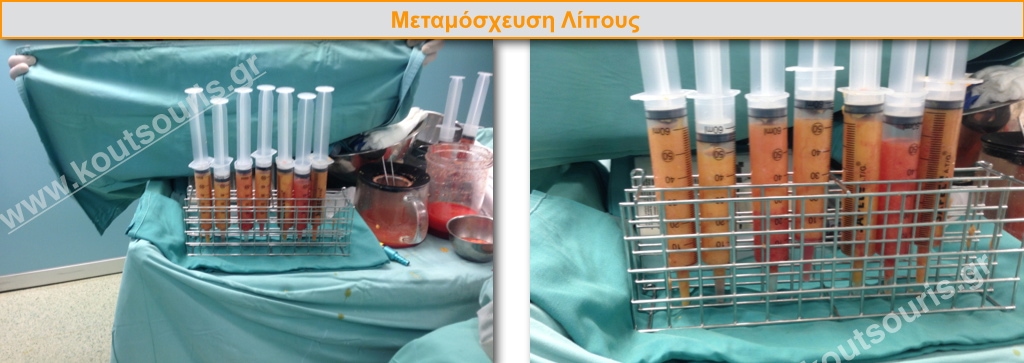
One of the most common problems during the Fat Grafting treatment is that we are not aware of the compatibility grade of transplant in advance. This means that we do not know how much of the transplanted fat will be absorbed. We usually transfer double or triple amount of fat. This fact itself creates a technical issue:
- If a larger amount of fat will be absorbed than the desirable, then we should repeat the treatment again and add fat in the atrophic area.
- If a smaller amount of fat will be absorbed in the facial area, than the desirable, then it will be more than enough and it will create a swelling deformity like a small egg.In such case, we should repeat the treatment, in order to remove the transplanted fat, usually performing liposuction.
Another complication, which can occur during the breast Fat Grafting treatment, is the injury of the mammary gland in different spots because of using micro cannulas during the Fat Grafting procedure. This fact may affect both the clinic and mammographic image of the mammary gland.
Usually, after years, some microcalcifications can be created throughout the mammary gland, due to the appearance of micro hematomas. A differential diagnosis is required in order to prevent the breast malignancy development, given the fact that microcalcifications are an indication of malignancy.
We should note that among the transplanted adipocytes into the breast, there are also some primary cells, the so-called stem cells. Nowadays these cells are considered to be safe.
However, in the years to follow, the scientific community may give an answer to the question if the stem cells included in the transplanted fat have an oncogenic activity against the breast cells. Then we will able toexamine the safety of this procedure.
This is the reason why a special surgical team is required for the safe Fat Grafting, as well as a specialized team of radiologists and oncologists – mastologists, in order to ensure the early diagnosis of possible breast malignancy after breast Fat Grafting.
How can we examine the breast of a woman, who underwent a breast Fat Grafting?
After the breast size augmentation or correction with Fat Grafting treatment, the woman should examine her breast through both-handed palpation on a monthly basis.Regardless of having undergone a breast surgery or not, the woman should regularly examine her breast, as all women should too.
Every woman should undergo a regular radiological examination through:
- Digital Mammography
- Breast Ultrasound or
- Magnetic Resonance Imaging of breast (MRI).
After the surgery, the radiological examination should be repeated every 6 months and then every year, if everything looks normal.